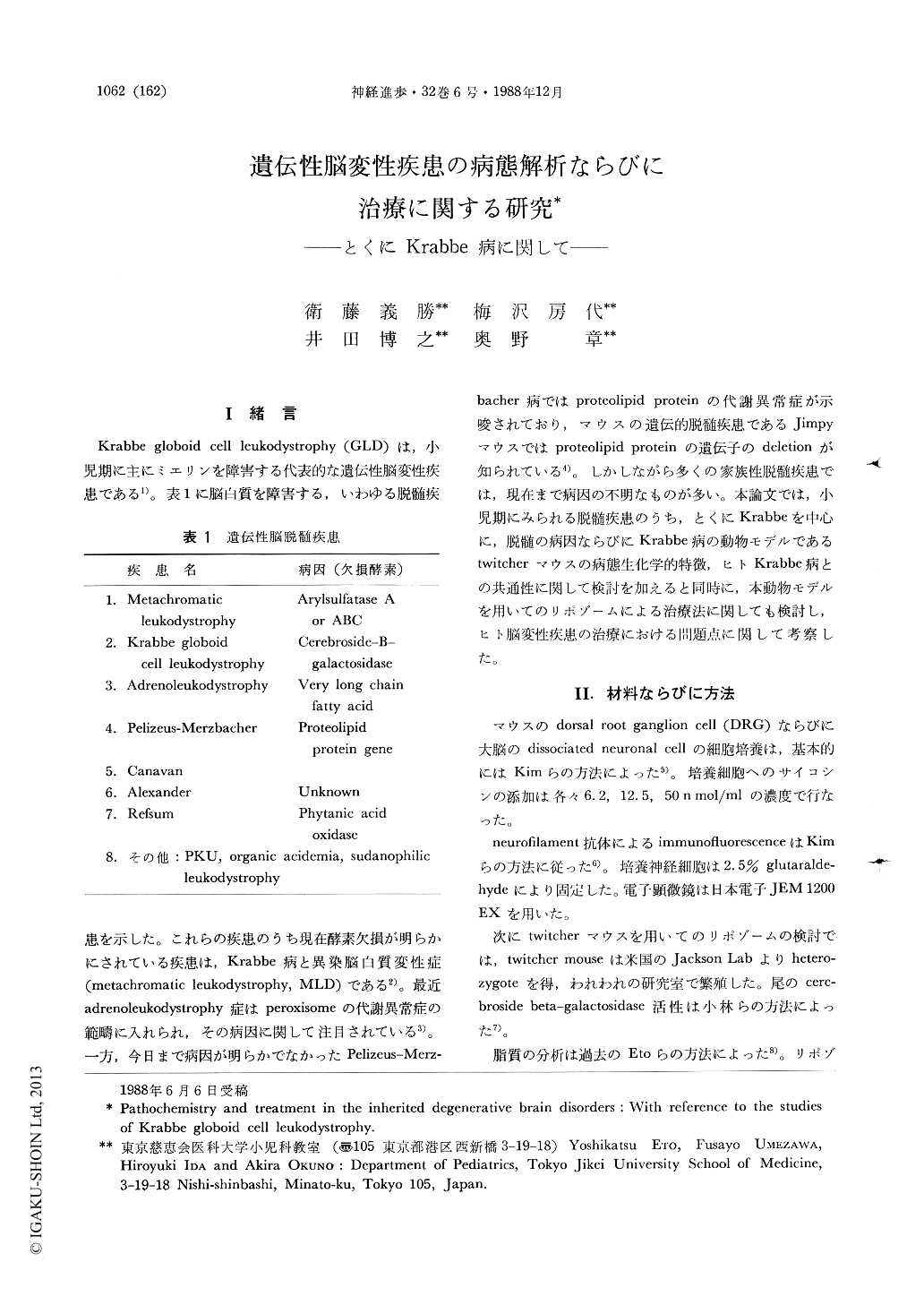Japanese
English
- 有料閲覧
- Abstract 文献概要
- 1ページ目 Look Inside
I 緒言
Krabbe globoid cell leukodystrophy(GLD)は,小児期に主にミエリンを障害する代表的な遺伝性脳変性疾患である1)。表1に脳白質を障害する,いわゆる脱髄疾患を示した。これらの疾患のうち現在酵素欠損が明らかにされている疾患は,Krabbe病と異染脳白質変性症(metachromatic leukodystrophy,MLD)である2)。最近adrenoleukodystrophy症はperoxisomeの代謝異常症の範疇に入れられ,その病因に関して注目されている3)。一方,今日まで病因が明らかでなかったPelizeus-Merzbacher病ではproteolipid proteinの代謝異常症が示唆されており,マウスの遺伝的脱髄疾患であるJimpyマウスではproteolipid proteinの遺伝子のdeletionが知られている4)。しかしながら多くの家族性脱髄疾患では,現在まで病因の不明なものが多い。本論文では,小児期にみられる脱髄疾患のうち,とくにKrabbeを中心に,脱髄の病因ならびにKrabbe病の動物モデルであるtwitcherマウスの病態生化学的特徴,ヒトKrabbe病との共通性に関して検討を加えると同時に,本動物モデルを用いてのリポゾームによる治療法に関しても検討し,ヒト脳変性疾患の治療における問題点に関して考察した。
Krabbe's globoid cell leukodystrophy is characterized by severe demyelination in the white matter. The cause of devastating white matter is unknown, but psychosine might be responsible for this phenomenon, since psychosine is known to be cytotoxic and acts as a hemolytic agent. In this investigation, psychosine was added to mouse dissociated neural cell culture or explanted dorsal root ganglion cell culture in a concentration of 12.5 n moles/ml medium and chased the morphological changes of neurotoxicity by the addition of psychosine. The addition of psychosine in these neuronal cell cultures produced loss of cells, abnormal shapes of mitochondria such as ballooning and irregular, and loss of cytoskeleton system which could be identified by phase contrast microscopy, immunochemistry with anti-neurofilament antibody and electron microscopy. These data suggest that psychosine affects on mitochondrial membraneand then proceeds to cell dysfunction.

Copyright © 1988, Igaku-Shoin Ltd. All rights reserved.


